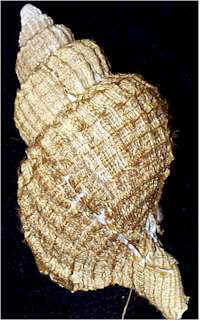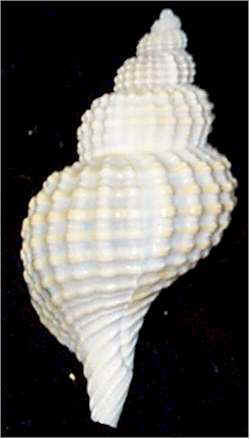

How to clean your seashells
Many people pick up a seashell or two while on vacation at the beach. It makes a nice inexpensive momento of their vacation. The problems do not occur until they realize that if not cleaned properly, seashells can have a devastating effect. From glares of other travelers wondering why you have not showered, to airport authorities searching through your bags for the unknown odor emitting from them. Properly cleaned seashells, on the other hand, will show no such effects. Many times seashells actually look considerably nicer without any algae and barnacles covering them. The natural color of seashells are often quite different from what you find at the beach. A good cleaning is all that is needed to bring this out and destroy any odors the seashells might have.
A seashell that is found already dead with no animal tissue inside is actually a lot easier to clean then most people think.


with periostracum periostracum removed
Outer covering (algae and periostracum)- Take the seashells and let them soak in a 50-50 solution of bleach and water. There is no set time to let them soak because it various by the type of seashells and quantity of seashells being cleaned. Just make sure to remove them after the periostracum is gone. The periostracum is the flaky leathery covering that covers most live seashells.
Barnacles- If after bleaching there are still some barnacles and other matter on the seashells you can use an instrument such as a dental pick to pick off the material. Other useful tools are a water pick, toothbrush, and a grill brush.
Rough lips- If the lip of your seashells are chipped or rough and the natural state is not important to you, one may use a rotary grinder or file to smooth down the lip. Another great tool that can be used is a Dremel.
Shining-If you wanted to give your seashells a luster you can then wipe them with a mineral or baby oil.
MAKE SURE TO WEAR PROTECTIVE EYEWEAR WHEN CLEANING SEASHELLS